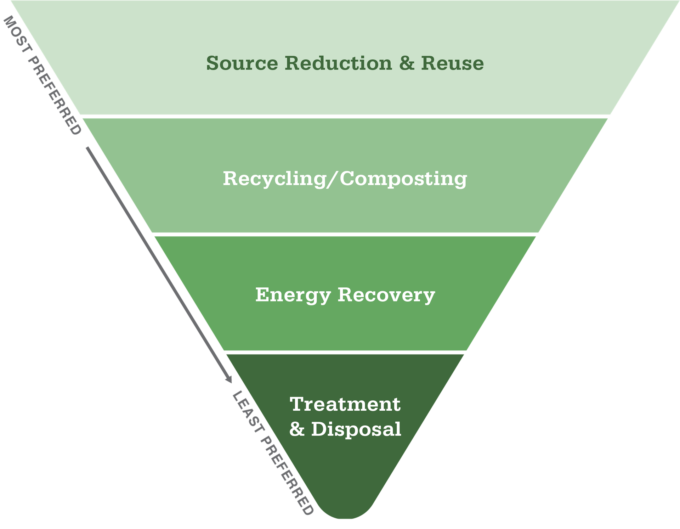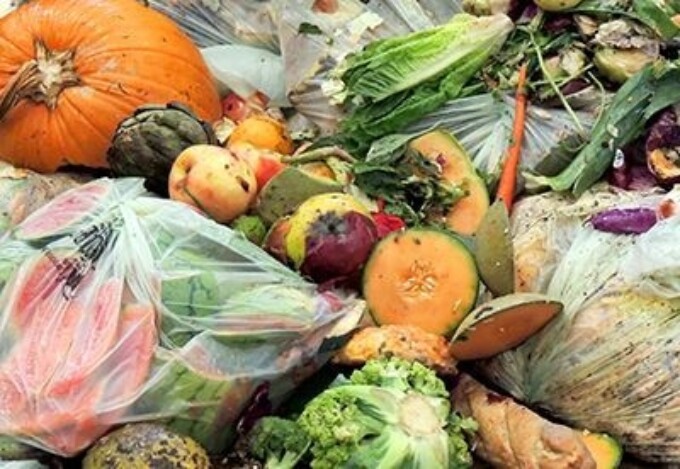
The waste hierarchy is a set of priorities for the efficient use of resources. The image above is from the EPA’s page on sustainable materials management and shows the various management strategies from most to least environmentally preferred. The hierarchy prioritizes the “3 Rs” (reduction, reuse, and recycling) as essential to sustainable materials management. This framework advocates for behavior and decision-making that treats disposal (landfill) as a last resort that is only exercised after all other options have been exhausted. BPI supports this approach through its Certification, Education, and Advocacy programs.
Not creating waste in the first place is the most effective way to reduce waste. There are many scenarios (large and small) where reduction and reuse strategies can keep material out of landfills, and BPI supports these efforts. Buying used, choosing reusable items over disposable, and borrowing or renting over buying are all ways to reduce waste. In contrast, single-use items are used once before being discarded as waste and should only be used when other options don’t exist or are not feasible.
BPI views its partnerships with companies who make single-use products and packaging as directly supportive of the waste hierarchy. The reason that “Recycle” is one of the 3 R’s is that single-use packaging cannot be eliminated overnight. Recycling can be part of the broader solution, so long as the material is actually being kept out of landfills and the environment and is getting authentically recycled or composted.
Reducing the amount of packaging generated to recycle or compost in the first place has an outsized environmental benefit, even though a lot more attention is given to recyclable and compostable alternatives. An emphasis on efficiency and source reduction is needed, but new alternatives to traditional solutions are also necessary: recyclable or compostable single-use products that provide a much-needed and meaningful bridge to a zero waste future.
When it’s not feasible to reduce or reuse, choosing items that can be recycled or composted can help keep materials out of landfills. When recycling or composting, it’s crucial to include only items accepted in that program. Not all single-use items are recyclable or compostable. “Wishcycling,” or putting an item in a recycling or compost bin hoping it will get recycled or composted, does more harm than good by creating contamination. While recycling is the best option for some single-use items like water bottles and aluminum cans, it is a consistently bad option for most foodservice packaging. Compostable packaging is a way to help divert materials that aren’t traditionally recyclable, such as food-contaminated serviceware, and serves as a mechanism to divert more food waste to composting.

This is where compostable foodservice packaging comes into play. The biggest contaminant in many residential and commercial organics streams is non-compostable packaging. This is one reason why the U.S. sends more food scraps to landfills than any other material. Replacing the non-compostable packaging with BPI-certified items creates an organics stream that composters accepting food scraps and packaging can process into valuable finished compost, keeping both the food waste and packaging out of landfills. The BPI Certification Mark makes it clear that an item meets compostability standards and will break down in real-world conditions.
Photo by Doug Pinkerton, courtesy BioCycle.net